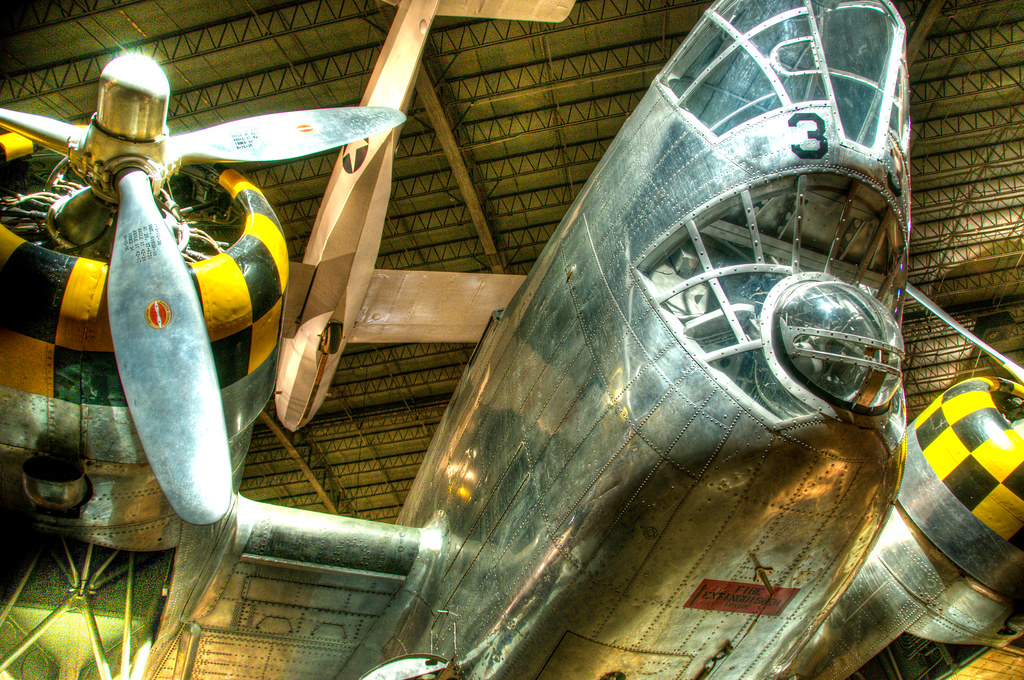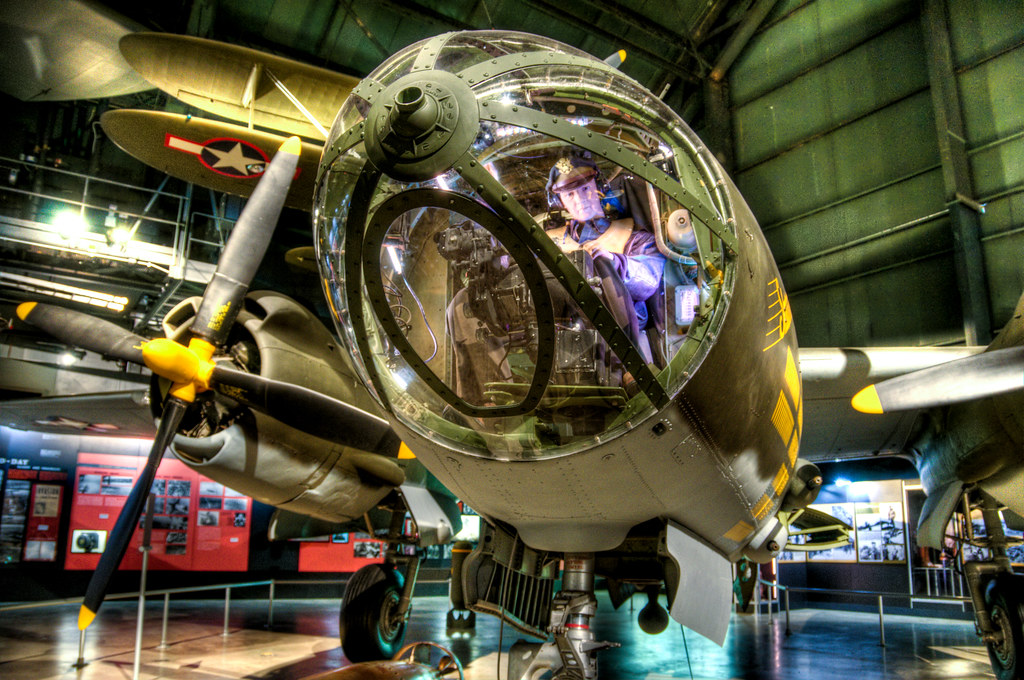
Boeing B-17G Flying Fortress
The Flying Fortress is one of the most famous airplanes ever built. The B-17 prototype first flew on July 28, 1935. Although few B-17s were in service on Dec. 7, 1941, production quickly accelerated after the U.S. entry into World War II. The aircraft served in every combat zone, but it is best known for the daylight strategic bombing of German industrial targets. Production ended in May 1945 and totaled 12,726. In March 1944 this B-17G was assigned to the 91st Bomb Group -- "The Ragged Irregulars" -- and based at Bassingbourn, England. There its crew named it Shoo Shoo Shoo Baby, after a popular song. It flew 24 combat missions in WWII, receiving flak damage seven times. Its first mission (Frankfurt, Germany) was on March 24, 1944, and last mission (Posen, Poland) on May 29, 1944, when engine problems forced a landing in neutral Sweden where the airplane and crew were interned.

Beech AT-11 Kansan
The AT-11 was the standard U.S. Army Air Forces World War II bombing trainer; about 90 percent of the more than 45,000 USAAF bombardiers trained in AT-11s. Like the C-45 transport and the AT-7 navigation trainer, the Kansan was a military version of the Beechcraft Model 18 commercial transport. Modifications included a transparent nose, a bomb bay, internal bomb racks and provisions for flexible guns for gunnery training. Student bombardiers normally dropped 100-pound sand-filled practice bombs. In 1943 the USAAF established a minimum proficiency standard of 22 percent hits on target for trainees. Typical combat training missions took continuous evasive action within a 10-mile radius of the target with straight and level final target approaches that lasted no longer than 60 seconds. After Sept. 30, 1943, the AT-11 usually carried a Norden Bombsight and a C-1 automatic pilot, which allowed the bombardier student to guide the aircraft during the bombing run.

Douglas B-18 Bolo
The Douglas Aircraft Co. developed the B-18 to replace the Martin B-10 as the U.S. Army Air Corps' standard bomber. Based on the Douglas DC-2 commercial transport, the prototype B-18 competed with the Martin 146 (an improved B-10) and the four-engine Boeing 299, forerunner of the B-17, at the Air Corps bombing trials at Wright Field in 1935. Although many Air Corps officers judged the Boeing design superior, the Army General Staff preferred the less costly Bolo (along with 13 operational test YB-17s). The Air Corps later ordered 217 more as B-18As with the bombardier's position extended forward over the nose gunner's station.

Martin B-26G Marauder
Although the Marauder did not make its first flight until Nov. 25, 1940, its design showed such promise that the Air Corps ordered 1,131 B-26s in September 1940. The B-26 began flying combat missions in the Southwest Pacific in the spring of 1942, but most were subsequently assigned to Europe and the Mediterranean. Bombing from medium altitudes of 10,000 to 15,000 feet, the Marauder had the lowest loss rate of any Allied bomber -- less than one-half of one percent. U.S., British, Free French, Australian, South African and Canadian aircrews all flew the B-26 in combat. By the end of World War II, B-26 crews had flown more than 110,000 sorties and had dropped 150,000 tons of bombs.

No comments:
Post a Comment